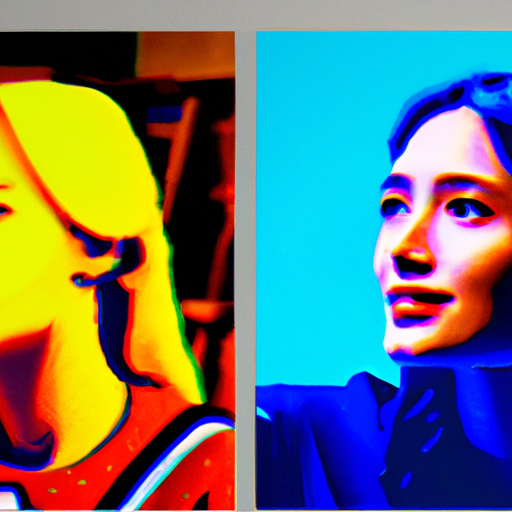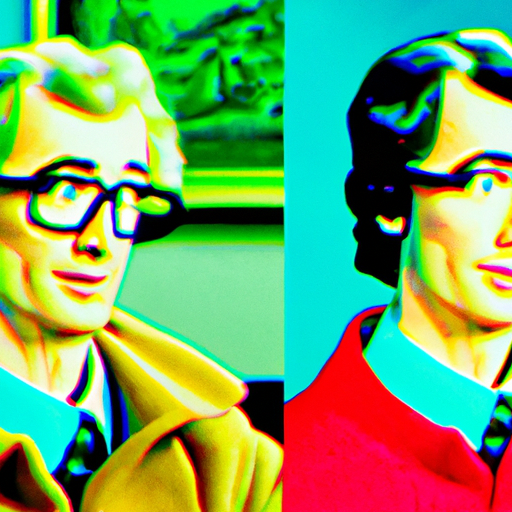
-
Table of Contents
The Future of AI-Generated Illustration Tools

Artificial Intelligence (AI) has revolutionized various industries, and the world of illustration is no exception. AI-generated illustration tools are transforming the way artists and designers create visual content. These tools leverage machine learning algorithms to generate high-quality illustrations quickly and efficiently. As AI technology continues to advance, the future of AI-generated illustration tools holds immense potential. In this article, we will explore the current state of AI-generated illustration tools, their benefits and limitations, and the exciting possibilities they offer for the future.
The Current State of AI-Generated Illustration Tools
AI-generated illustration tools have come a long way in recent years. They have evolved from simple automated drawing programs to sophisticated systems capable of creating intricate and realistic illustrations. These tools use deep learning algorithms to analyze vast amounts of visual data and learn the patterns and styles of various art forms.
One notable example of AI-generated illustration tools is Google’s AutoDraw. AutoDraw uses machine learning to recognize rough sketches and suggest more refined drawings based on its extensive database of illustrations. This tool enables even those with limited artistic skills to create professional-looking illustrations quickly.
Another prominent player in the field is NVIDIA’s GauGAN. GauGAN uses generative adversarial networks (GANs) to transform simple sketches into photorealistic images. By understanding the relationships between different objects and their visual characteristics, GauGAN can generate stunning landscapes, buildings, and even imaginary creatures.
The Benefits of AI-Generated Illustration Tools
AI-generated illustration tools offer several advantages over traditional methods of creating illustrations. Here are some key benefits:
- Time Efficiency: AI-generated illustration tools can significantly reduce the time required to create high-quality illustrations. Artists can focus on ideation and concept development, while the AI algorithms handle the time-consuming tasks of rendering and detailing.
- Accessibility: These tools democratize the world of illustration by making it accessible to a broader audience. Even individuals without formal training in art can use AI-generated illustration tools to create visually appealing content.
- Inspiration and Collaboration: AI-generated illustration tools can serve as a source of inspiration for artists. They can explore different styles and experiment with new ideas by leveraging the AI’s ability to generate diverse illustrations. Additionally, these tools facilitate collaboration between artists, allowing them to build upon each other’s work and create unique pieces.
- Consistency and Scalability: AI-generated illustration tools ensure consistency in style and quality across a series of illustrations. This is particularly useful for branding purposes, where maintaining a consistent visual identity is crucial. Moreover, these tools can scale effortlessly to handle large volumes of illustrations, making them ideal for projects with tight deadlines.
The Limitations of AI-Generated Illustration Tools
While AI-generated illustration tools offer numerous benefits, they also have certain limitations that need to be considered:
- Lack of Originality: AI-generated illustrations are based on existing patterns and styles learned from vast datasets. As a result, they may lack the originality and uniqueness that human artists bring to their work. However, this limitation can be overcome by combining AI-generated elements with human creativity.
- Interpretation Challenges: AI algorithms may struggle to accurately interpret abstract or complex concepts. They excel at generating realistic images based on predefined parameters, but they may struggle when it comes to more subjective or conceptual illustrations.
- Ethical Considerations: AI-generated illustration tools raise ethical concerns regarding copyright infringement and intellectual property. The use of AI algorithms to generate illustrations that closely resemble existing artwork or designs can potentially infringe upon the rights of artists and designers.
- Dependency on Data Quality: The quality of AI-generated illustrations heavily relies on the quality and diversity of the training data. Biases present in the training data can be reflected in the generated illustrations, leading to potential issues of representation and fairness.
The Future Possibilities of AI-Generated Illustration Tools
The future of AI-generated illustration tools is filled with exciting possibilities. Here are some potential developments we can expect:
- Enhanced Creativity Support: AI algorithms will continue to evolve to better understand and support human creativity. They will become more adept at interpreting abstract concepts and generating illustrations that align with the artist’s vision.
- Customization and Personalization: AI-generated illustration tools will offer greater customization options, allowing artists to define their unique styles and preferences. Artists will be able to train AI models on their own artwork, enabling the generation of illustrations that closely match their personal style.
- Improved Collaboration: AI-generated illustration tools will facilitate seamless collaboration between human artists and AI systems. Artists will be able to provide high-level guidance to the AI algorithms, allowing them to generate illustrations that align with the artist’s intent.
- Real-Time Feedback and Iteration: AI-generated illustration tools will provide real-time feedback and suggestions to artists, helping them refine their work and explore new creative directions. This iterative process will enable artists to experiment and iterate more efficiently.
- Integration with Other Creative Tools: AI-generated illustration tools will integrate seamlessly with other creative software and tools, enhancing the overall creative workflow. Artists will be able to combine AI-generated elements with their own artwork, opening up new possibilities for hybrid creations.
Summary
AI-generated illustration tools have already made a significant impact on the world of art and design. They offer time efficiency, accessibility, inspiration, collaboration, consistency, and scalability. However, they also have limitations related to originality, interpretation, ethics, and data quality. Looking ahead, the future of AI-generated illustration tools holds immense potential. We can expect enhanced creativity support, customization, improved collaboration, real-time feedback, and integration with other creative tools. As AI technology continues to advance, these tools will empower artists and designers to push the boundaries of their creativity and create visually stunning illustrations.
